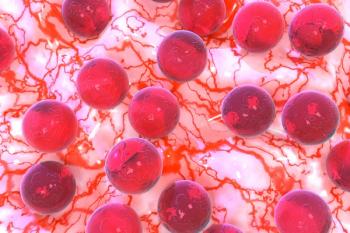
Radiation Oncologist Strives to Improve the Patient Experience
“As a field, we’re trying to push hard to make [radiation] patient-centered, and because of that, the field is the future of the field is pretty bright,” James B. Yu, MD, MHS, FASTRO, stated.
Radiation, for a long time, was considered an expensive, non-cost-effective treatment. James B. Yu, MD, MHS, FASTRO, stated during an interview with CancerNetwork®, however, it’s time that that changes.
Biologics, immunotherapy, and pharmaceuticals have all become so expensive that, in many cases, radiation is the better option for patients in terms of cost-effectiveness; it can be used either as an adjunct or concurrent treatment, and it can even be used to delay other, more expensive methods of treatment.
Ultimately, the goal of a radiation oncologist is to help patients, and as Yu said, there’s a great deal of work and effort being put in to make radiation more convenient and patient centered.
Yu is a professor in the Department of Radiation Oncology and Applied Sciences, the leader of the Genitourinary Radiation Oncology Program at Dartmouth Hitchcock Medical Center, and a radiation oncology editorial advisory board member of the Journal ONCOLOGY®.
Transcript:
One thing we haven’t touched upon is the cost of care. The future of radiation oncology is very bright from a cost-effectiveness standpoint. Fifteen to 20 years ago, radiation was thought to be an overly costly treatment that we would try to minimize or avoid as much as possible if we wanted to deliver high-quality, low-cost care. With biologics and immunotherapy and [pharmaceuticals] becoming so extraordinarily expensive compared with even 20 years ago, radiation as either an adjunct or primary treatment, or concurrent [treatment], if it can delay switching systemic therapy, or even… serve as a temporary pause in between systemic therapies, or even relative to systemic therapy, radiation is much more cost-effective now. The national conversation, from a health services standpoint, needs to start thinking about radiation as a cost-effective treatment. A spatially targeted treatment should be used to either delay switching to different systemic therapies or perhaps obviate the need for a super expensive systemic therapy for a period of time. What we need to start talking about is radiation as a renewable, cost-effective therapy.
We are doing everything we can to make radiation more convenient, right? With the super high interest in radiosurgery, 1 treatment or 5 treatments is way more convenient than 44 or 40 treatments. As a field, we're trying to push hard to make it patient-centered, and because of that, the future of the field is bright.
Newsletter
Stay up to date on recent advances in the multidisciplinary approach to cancer.


















































































